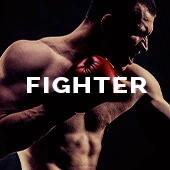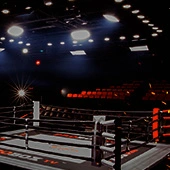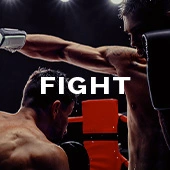by David P. Greisman
For weeks, we believed him. We watched Timothy Bradley as he trained, listened when he spoke, saw him assembled into the miniature musculature of a welterweight Adonis. We heard the words of a man raised to be tough, driven and unrelenting, a man ready not just to face the biggest fight of his career, but also to win it.
He was a different opponent for Manny Pacquiao, whose accomplishments had astonished, whose recent run had propelled him to preeminence, but whose entry in history had exited into revisionist hindsight. Bradley, unlike Pacquiao’s past four years of foes, was undefeated, young and in his prime. He’d neither be weight drained nor disadvantaged in size, not left lumbering and lost against the onslaught.
Only Juan Manuel Marquez had truly troubled Manny Pacquiao, had shown that there were limitations, had twice come closer than anyone to beating him since Pacquiao had evolved into this vicious dervish. Bradley wasn’t Marquez, but he was different than the rest, and so we believed him, not necessarily that he would beat Pacquiao, but that he could.
And so we respected both the hubris and the humor of Bradley approaching this biggest fight of his career with his mind also on the fight that might follow it. Days before he was to face Manny Pacquiao, Bradley presented a mock-up poster and an oversized ticket for their rematch — ‘Bradley-Pacquiao 2,’ it said, the names transposed, the supposed new champion listed first for a bout on Nov. 10, five months and a day between the original and the sequel.
And now Bradley has defeated Pacquiao. Now there might just be that rematch.
We believed that Timothy Bradley could beat Manny Pacquiao. That Bradley actually did beat Pacquiao —and particularly how he beat him — is what has left us in disbelief.
We believed Bradley would give Pacquiao a good fight, and we saw him do so. We believed Bradley could beat Pacquiao, but an overwhelmingly majority of us did not see that happen.
Two judges did, however.
Duane Ford and CJ Ross gave seven rounds to Bradley, five rounds to Pacquiao, a 115-113 scorecard that gave Bradley a shocking split-decision victory. The lone scorecard for Pacquiao was also, at 115-113, surprisingly close.
We saw Pacquiao land more. We saw Pacquiao land cleaner. We saw Pacquiao land harder. We saw Pacquiao win competitively but clearly.
There are some in dissent who saw otherwise. They are overwhelming outliers in the minority. We know what we saw, but just didn’t know that what we were seeing at the time was a robbery taking place.
We saw Bradley throwing more punches in the early rounds and moving away from Pacquiao when not on offense. We saw Pacquiao less active against a mobile fighter who could return fire with quick counters.
Yet we saw Pacquiao catching Bradley with straight left hand after straight left hand, targeting it where Bradley was moving his head, unable to avoid a well-timed, well-placed shot.
We saw Bradley doing more in the opening minutes of rounds.
Yet we saw Bradley not necessarily landing much, and Pacquiao opening fire with flurries in the final 60 seconds, leaving his imprint on the stanza.
We saw Bradley summoning the toughness we knew was in him, battling through a sprained right ankle he’d rolled in the fourth round and an injury in his left foot he said had come during the second round. He kept moving, at times causing Pacquiao to stand at the center of the ring and tap his gloves, challenging Bradley to come to him.
We saw Bradley more effective in the final rounds, making Pacquiao miss, using his legs and his brain to out-box Pacquiao while Pacquiao seemed to be taking his foot off the gas.
Pacquiao was ahead by five points on Roth’s scorecard entering the 10th round. He was ahead by one point on Ross’ scorecard. He was down by a point on Ford’s scorecard.
Roth and Ross gave all three of the final rounds to Bradley. Ford gave the 10th and the 12th to Bradley, the 11th to Pacquiao.
Pacquiao, in hindsight, shouldn’t have coasted in the final rounds, shouldn’t have allowed the fight to go to the scorecards without an exclamation point.
It’s still not his fault that he lost.
The scorecards didn’t pass the smell test. The fight didn’t feel like a Bradley victory. Boxing matches are scored on a round-by-round basis, yet the judges’ tallies didn’t reflect reality.
It was a conclusion that was bad for boxing — but great for business.
Boxing and business are admittedly intertwined; what’s good for the bottom line is great for the sport.
Money isn’t everything, though. It isn’t that Bradley’s controversial win over Pacquiao is another one of those clichéd black eyes for the sport. It isn’t that casual fans watching the fight might lose confidence in the nonexistent sanctity of the sweet science and decide not to buy another pay-per-view.
Rather, it is that Bradley SD12 Pacquiao was another bad decision that nothing will be done about, allowing the same mistakes to be repeated.
Judging is subjective. There are criteria, however, to guide judges in their decisions. When judges turn in scorecards that are so divergent from the majority, then it is best to at least find out whether these trained professionals need more training.
All three judges from last year’s debacle of a decision in Atlantic City which Paul Williams was somehow given a victory over Erislandy Lara remain suspended. We are yet to learn just what their rationale was for scoring more rounds in favor of Williams, the clear loser. Their reasons weren’t enough for the New Jersey State Athletic Control Board to allow them to keep judging fights. But those reasons haven’t been publicized, haven’t accentuated what the commission’s expectation is.
Nevada does not seem likely to call Ford, Ross or Roth before its commission.
“We had three seasoned professionals working, and I don’t question their determinations,” Skip Avansino, chairman of the Nevada State Athletic Commission, said this past weekend to Las Vegas Review-Journal reporter Steve Carp.
“Unless something is brought to our attention that there was improper behavior, we’re not going to take any action,” Avansino said. “I’m not going to second-guess our judges.”
How else should an athletic commission decide whether its judges are doing a good job?
There will still be bad decisions. But there should be oversight to limit them — and perhaps an overhaul to remove or retrain those whose cards are often off.
No changes will be made, though. These judges will return to work. The promoter, Top Rank, will return to Nevada. Bradley-Pacquiao 2, should it occur, will likely return to Las Vegas.
There are millions upon millions more to be made. There is a sellable storyline for the rematch, a highly likely fight given contractual clauses and a more attractive promotion than a second fight between Pacquiao and Miguel Cotto or a fourth fight between Pacquiao and Marquez.
A wronged superstar wants to show that he still is the better fighter, no matter what the judges said — while an emerging star wants to prove that he can convince more than just two judges and a minority of observers.
The 10 Count
1. Shane Mosley’s retirement, as with when Oscar De La Hoya called it a career three years ago, comes at the perfect time.
His final four fights over these past two years read like this: a wide loss to Floyd Mayweather Jr., an ugly draw with Sergio Mora, a wide loss to Manny Pacquiao and a wide loss to Saul “Canelo” Alvarez.
There’s nothing wrong with losing to Mayweather, Pacquiao and Alvarez. But it was the way that he was losing, and how he looked, that meant he needed to hang up his gloves. He was at times unwilling or unable to let his hands go, and when he did there was much less power behind his punches than there had been when speed and power had been the hallmarks of his repertoire.
His last win was against Antonio Margarito in January 2009. It’d become increasingly clear that the Margarito victory would be his last great performance.
It’s better to get out after losses against the best fighters and biggest stars than it would be for him to keep going, continue to deteriorate and take punishment (and possibly defeats) against lower-level opponents, all while getting paid less in return.
2. Mosley and Winky Wright weren’t the only fighters to retire last week; the aforementioned Antonio Margarito did so as well.
It’s no surprise — between Margarito’s well-documented eye issues and then a hurt Achilles tendon that had kept him sidelined this year, he was an old 34, a boxer who had gone as far as his body had let him and his heart and chin and determination could take him.
It seemed that he was going to become a sacrificial lamb for whoever his next big-fight opponent was. It seemed like that would be a bad idea.
My father put it well: We were now worrying about Antonio Margarito much as we had also worried about Israel Vazquez.
3. Randall Bailey’s one-punch knockout win over Mike Jones to win a vacant welterweight title was memorable.
Unfortunately, what Bailey did in the nearly 11 rounds preceding it was the kind of forgettable that won’t be forgotten.
Bailey had waited on the periphery last year, stepping aside from a mandatory shot at the IBF belt in favor of allowing Andre Berto, his stable mate under Lou DiBella, to face titleholder Jan Zaveck instead. And then Bailey never got to face Berto, instead meeting Jones to fill the vacancy.
Bailey has the belt now. And he has the highlight reel knockout. But the 37-year-old Floridian might just remain as avoided as he was before.
That’s because a guy with one-punch power who stinks out the joint beforehand has just as much risk but far less reward as a guy with one-punch power who brings the house down.
4. Bailey threw just 298 punches in nearly 11 rounds, according to CompuBox stats, an average of about 27 punches per round. He landed only 52 of those, a 17 percent connect rate, an average of less than 5 per round.
Of those, he threw a miniscule 64 power punches on the entire night — less than 6 per round, less than 2 per minute. He landed 18, or just one landed power punch for every minute and 50 seconds that went by. One of those power punches knocked Jones down in Round 10. Another put Jones down for good in Round 11.
He lulled us and Jones to sleep — and then woke us up when he knocked Jones out.
5. Teon Kennedy had 13 landed punches on Guillermo Rigondeaux.
Guillermo Rigondeaux scored five knockdowns on Teon Kennedy.
It’s not the normal turn of phrase, but this won’t be the last time someone gets smoked by a Cuban.
6. Boxers Behaving Badly update: Julio Cesar Chavez Jr. has pleaded no contest to one misdemeanor count of driving under the influence of alcohol, according to TMZ.com.
The middleweight titleholder was arrested in January, less than two weeks before his fight with Marco Antonio Rubio. His plea deal came last week, with less than two weeks to go before this Saturday’s bout with Andy Lee.
Prosecutors dropped two other misdemeanor charges: another count relating to driving under the influence, and one count for allegedly not having a driver’s license, according to the report.
“Chavez was sentenced to three years [of] probation and ordered to attend 30 [Alcoholics Anonymous] meetings — which he already did,” the report said.
Chavez, 26, is 45-0-1 with 31 knockouts and 1 “no decision.”
7. Chavez-Rubio was sponsored by Tecate. So, too, is Chavez-Lee. Kelly Pavlik’s comeback bout last week, meanwhile, was brought to you by Corona.
No, seriously.
8. If Kelly Pavlik were Jermain Taylor, his comeback fights against Aaron Jaco in March and against Scott Sigmon last week would’ve been on Showtime instead of on Azteca America and ESPN2.
Then again, Pavlik’s scheduled comeback last August against Darryl Cunningham was to have been on “ShoBox” — and then Pavlik pulled out.
9. Kelly Pavlik at super middleweight will never have the explosiveness he had just eight pounds south. We knew that from the moment he had his rematch with Jermain Taylor four years ago, with both men coming in at 164 pounds. He also will not ever have the speed needed to best the better titleholders in the division.
There’s no shame in not being able to beat Andre Ward or Carl Froch, however. And there’s no need to expect that Pavlik must be among the best in order to be seen on screen.
The key for Pavlik and his team is this: Is it more important to maneuver Pavlik toward the upper echelons of the division and find out whether he belongs, or is it better to put him in entertaining fights that fans will want to see and networks will want to pay for?
The second option will prolong his career and potentially earn him more money.
I’d rather see Pavlik fight guys at or around his level. So what if that means his time at the top will become an even more distant thing of the past? We were content with seeing Arturo Gatti in with opponents from the second tier. But few athletes are ever content admitting that they can’t win. It is why Gatti went in with Mayweather with a heart bigger than his head. It is why Shane Mosley wanted immediate rematches with Vernon Forrest and Winky Wright. And it is why we see fighters continue on long past the point in which they should no more.
Pavlik needn’t retire. He needn’t fade into the background. Nor should he take an unnecessary beating. Let’s see him in the right fights — for him and for us.
10. One-sided drubbings. One-punch knockouts. Action-packed opening rounds. Fouls and an abrupt ending to what could’ve been an entertaining bout. A highly bizarre delay before the main event. A highly controversial ending to that fight.
All Saturday’s pay-per-view was missing was HBO tying together its main Manny Pacquiao storylines and speculating if Pacquiao’s calves were bothering him because he became more religious…
David P. Greisman is a member of the Boxing Writers Association of America. His weekly column, “Fighting Words,” appears every Monday on BoxingScene.com.
Follow David on Twitter at twitter.com/fightingwords2 or on Facebook at facebook.com/fightingwordsboxing, or send questions and comments to fightingwords1@gmail.com



